 April 5, 2018 John E. Ross, KD8IDJ, Editor
| |||||||||||||||||||||||||||
More than 30,000 New Ham Licensees and 7,000 Amateur Radio Exam Sessions in 2017 For the fourth year in a row, more than 30,000 new licensees joined the Amateur Radio ranks, and ARRL Volunteer Examiner Coordinators (VEC) conducted more than 7,000 Amateur Radio exam sessions, serving some 35,350 candidates for a new or upgraded license. At the end of December 2017, the US Amateur Radio population stood at 748,136.
The Amateur Radio population has grown steadily over the past decade. At nearly 378,000, Technician licensees represented the largest segment, with General (174,206), Amateur Extra (145,034), Advanced (41,938), and Novice (9,056) trailing. Licensee numbers showed continued growth across all classes except Advanced and Novice, which the FCC no longer issues; those numbers continue to drop. "I'm hopeful that the number of new licensees will be more than 30,000 at the end of this year," ARRL VEC Manager Maria Somma, AB1FM, said. "I would love to see this trend continue!" New Licenses 2008 - 2017
Despite the optimistic influx of 32,196 newcomers last year, the net growth of 5,349 -- about 0.72% over December 2016 -- reflects some 27,000 expired or cancelled licenses in the FCC database over the past year. In making the case for changes to the entry-level license, the ARRL Board's Entry-Level License Committee referred to "the large number of Baby Boomers (roughly born 1945 - 65) [who] will soon be aging off the licensee rolls." The committee predicted the likelihood of "a significant decline in the number of hams, unless we take steps to reverse it." Read more. LoTW Support for CQ Worked All Zones (WAZ) Award Goes Live ARRL and CQ magazine have announced the launch of Logbook of The World (LoTW) support for CQ's Worked All Zones (WAZ) Award program, effective immediately. The goal of the project, under way since last year, has been to create the proper technical support system so that radio amateurs can submit LoTW confirmations for WAZ credit, and that has been accomplished, CQ and ARRL said in a joint statement. LoTW -- ARRL's electronic confirmation system for Amateur Radio contacts --provides contact confirmation when both stations upload their logs to the system, and a match between the logs is confirmed. LoTW has already supported the CQ WPX Award program since 2012.
ARRL First Vice President Greg Widin, K0GW, concurred. "Users of LoTW have been telling us for some time that they would like to use QSLs from LoTW to apply for the WAZ award," he said. "They will now be able to select confirmations to be used for WAZ credit." Read more. The Doctor Will See You Now! "Receive Filters" is the topic of the latest (March 29) episode of the "ARRL The Doctor is In" podcast. Listen...and learn!
Every 2 weeks, your host, QST Editor-in-Chief Steve Ford, WB8IMY, and the Doctor himself, Joel Hallas, W1ZR, will discuss a broad range of technical topics. You can also e-mail your questions to doctor@arrl.org, and the Doctor may answer them in a future podcast. Enjoy "ARRL The Doctor is In" on Apple iTunes, or by using your iPhone or iPad podcast app (just search for "ARRL The Doctor is In"). You can also listen online at Blubrry, or at Stitcher (free registration required, or browse the site as a guest) and through the free Stitcher app for iOS, Kindle, or Android devices. If you've never listened to a podcast before, download our beginner's guide. Just ahead: "Microphones." ARRL Searching for its Next CEO ARRL is seeking a full-time Chief Executive Officer (CEO) in Newington, Connecticut, to direct its day-to-day activities. ARRL has 159,000 members, an annual budget of $15 million, 90 paid The CEO will report to the President and the Board of Directors and work collaboratively with them in leading ARRL in accordance with its Articles of Association, Bylaws, and Board Policies. Specifically, he or she will ensure the day-to-day management of ARRL and its fiscal operation. In addition, he or she will oversee and make certain that ARRL's fundraising, marketing, human resources, technology, advocacy, and governance strategies are effectively implemented across all segments of the organization. Additional information is on the ARRL website. The closing date for applications is May 31, 2018. 2018 ARRL Field Day Gear is Here! ARRL Field Day -- the most popular on-the-air operating event in Amateur Radio -- is June 23-24, and official gear and supplies are now available from ARRL. Shirts, pins, patches, stickers, and -- of course -- coffee mugs are a great way to acknowledge and commemorate your participation in this annual event. There are two T-shirt color options -- navy blue and white. Order one, or one of each! Pair it with an ARRL hat of your choice, in black, khaki, or red and white.
This year, many groups and participants may choose to combine 2018 Field Day with our year-long operating event -- 2018 ARRL International Grid Chase (IGC) -- working stations in as many grid squares as possible and uploading log data to ARRL's Logbook of The World (LoTW). Clubs are encouraged to order early. Place a group order and pay just $12.50 shipping for all orders over $50 (while supplies last). Get your 2018 ARRL Field Day supplies from the ARRL Store online, or by calling 888-277-5289 before 5 PM Eastern Time. Outside the US, call (860) 594-0355. The complete 2018 ARRL Field Day packet is online. ARRL encourages participants to register their Field Day operations using the FD Site Locator. Frequency Measuring Test Set for April 6 UTC
ARRL Public Relations Committee Gets New Leadership, Updated Mission and Goals The ARRL Public Relations Committee is undergoing some changes under the leadership of new committee chair Steve "Sid" Caesar, NH7C, with ARRL Board Liaison and Roanoke Division Vice Director Bill Morine, N2COP, and ARRL Communications Manager David Isgur. An ARRL Life Member who has served on the PR Committee for about 3 years, Caesar succeeds Scott Westerman, W9WSW, as chair. The mission and goals for 2018 have been set. Caesar, Morine, and Isgur are putting together a team that will focus on empowering ARRL Public Information Officers (PIOs) and Public Information Coordinators (PICs) by giving them better tools and resources to reach out to traditional media outlets and social media, and to continue to raise the visibility of Amateur Radio.
These will include a revamped Contact! e-newsletter that will offer tips, suggestions, and best practices for PIOs and PICs; a re-energized PR reflector to share success stories and examples of what works and what doesn't in pitching media outlets, and a 2018 events calendar, to give PIOs and PICs a hook for drawing media attention to Amateur Radio. In addition, social media page guidelines are being developed to leverage coverage to communities both within and outside of Amateur Radio. Caesar, the new PR Committee chair, serves as the chief of Bureau of Indian Affairs Emergency Management (BIA EM) in the US Department of the Interior. Previously, Caesar served as the State, Local, Tribal, and Territorial (SLTT) Emergency Manager at the His 34-year public safety and emergency management career has also included experience in various areas of public safety. He is an active SKYWARN volunteer in the Washington, DC, area and an active contester and member of the Potomac Valley Radio Club (PVRC). During the run-up to ARRL's National Parks on the Air (NPOTA) operating event in 2016, Caesar assisted in coordinating with the National Park Service. Other PR Committee members include committee stalwart Angel Santana-Diaz, WP3GW; Andy Milluzzi, KK4LWR; Northern New Jersey PIC Ed Efchak, WX2R, and Alan Griffin, who represents Radio Amateurs of Canada (RAC) on the Committee. Read more. Second Public Test of FT8 "DXpedition Mode" Set for April 7 The second public test of FT8 "DXpedition Mode" will take place on April 7, and all radio amateurs are invited to participate. WSJT-X Developer Joe Taylor, K1JT, advises anyone planning to take part to download the latest "release candidate" (beta) version of WSJT-X -- now called version 1.9.0-rc3 -- and to read the latest revision of the FT8 DXpedition Mode User Guide, dated March 28, which includes changes and updates from previous User Guide editions.
Taylor said the WSJT-X development team is suggesting these temporary frequencies for testing DXpedition Mode: 3.567, 7.066, 10.1405, 14.105, 18.095, 21.067, 24.911, and 28.067 MHz. Taylor said he stressed that FT8 DXpedition Mode is not ready for routine use "because several operators or groups have been trying, against our advice, to use the not-yet-complete DXpedition Mode in real pileup situations. This misuse of a WSJT-X beta release -- or of code taken from the WSJT-X development branch -- has been counterproductive." Recently, one short DXpedition did deploy FT8 DXpedition Mode, but users in the pileup were not necessarily fully on board with how to use the new mode, or were using versions of FT8 that were incompatible with the DXpedition Mode iteration.
The User Guide stresses that FT8 DXpedition Mode should only be used by DXpedition stations and those trying to work them; in its beta form, the FT8 development team prefers to work in cooperation with a DXpedition that wants to use the new mode. The User Guide explains that in FT8 DXpedition Mode, the transmit frequencies of Fox (the DXpedition) and Hounds (the pileup) "are sometimes controlled by the program rather than by the operator, and this is undesirable for general use." "We hope to have a full 'green light' on usage in the fairly near future," Taylor told ARRL. Read more. Apparent First 2200-Meter Transatlantic Contact by US Radio Amateur Reported In late March, Paul Kelley, N1BUG, of Milo, Maine, completed what may have been the first transatlantic 2200-meter contact by a US radio amateur under Amateur Radio rules. Signals in this part of the spectrum and lower previously have spanned the Atlantic in one direction, and Canadian radio amateurs have reported transatlantic contacts on the band dating back several years.
"To the best of my knowledge this is the first transatlantic two-way QSO from the US on 2200 meters under Part 97 operation," said Kelley, who told ARRL that he gravitates toward the more challenging, "weak-signal" aspects of Amateur Radio and has been experimenting and DXing for 37 years now. "2200 meters is my new passion, and I am having a lot of fun with it!" he said. "I had been dreaming of -- and working toward -- a transatlantic QSO on 2200 meters for some time. Recently, I asked Chris Wilson, 2E0ILY, if he
would be interested in trying to work me on DFCW60 mode. Chris and I have heard each other on WSPR, but he does not hear me well enough yet for a JT9 or other digital QSO. Chris agreed to try DFCW60 -- dual-frequency CW, 60-second dit length." This was not a quick contact. It took four nights to complete, using night-by-night sequencing. Kelley called that "the minimum possible time" for such a contact, which included an exchange of complete call signs, signal reports, and acknowledgements. Kelley said they used the TMOR reporting system, borrowed from the moonbounce world. "The QSO was completed at 0020 UTC March 28, when I received 'R' from Chris," Kelley said. Read more. HAARP Facility to Resume Ionospheric Research this Week Alaska's super-power High-Frequency Active Auroral Research Program (HAARP) transmitters in Gakona, Alaska, will fire up again for the spring research campaign April 6 - 14. University of Alaska Fairbanks (UAF) Space Physics Group researcher and HAARP Chief Scientist Chris Fallen, KL3WX, told ARRL that more than 40 hours of "externally funded" experiments are in the queue.
For his part, Fallen said he still has some time remaining on his National Science Foundation (NSF) grant to study artificial airglow, but added that this is "a tough time of year in a tough year of the solar cycle" for such experiments. "It will not be dark enough in Gakona to observe artificial airglow emissions until 10 PM at the beginning of the campaign and 10:30 PM at the end of the campaign, due to the rapidly lengthening days in the Land of Midnight Sun."
Fallen said that due to weakening solar activity, the critical frequency of the ionosphere's F2 layer (foF2) is relatively low during the day, peaking at a little more than 4 MHz above Gakona in the late afternoon, and falling rapidly in the evening, limiting the time available for experiments. Fallen may continue his past practice of "bundling" amplitude modulated content of interest to hams in the airglow experiments. His previous airglow experiments were accompanied by tones and music to illustrate the Luxembourg effect and slow-scan television (SSTV) images in Scottie 1 format. Fallen plans to tweet selected transmitter frequencies and other information throughout the campaign from his personal Twitter page. HAARP's official Twitter page will share photos and other information of general interest, "such as what the HAARP dog is up to," Fallen said. Operation of the HAARP research facility was transferred from the US Air Force to UAF in 2015. Read more. Hamvention Setting Space Aside to Spotlight Emergency Communication Vehicles In keeping with its theme, "Serving the Community," Hamvention® 2018 is offering an opportunity for Amateur Radio groups to display the communication vehicles they use to serve their communities. A special area has been set aside at the Greene County Fairgrounds and Expo Center for emergency communication trailers, vans, trucks, and other vehicles. Hamvention organizers are hoping that emergency response groups such as ARES, RACES, CERT, and others with an interest in Amateur Radio emergency communication will take advantage.
Gary Hollenbaugh, NJ8BB, who has coordinated Hamvention emergency communication vehicle displays for 10 years, said that many groups thinking about building units could gain some beneficial ideas from seeing what other organizations have done. He encouraged teams to make information about their units available to share with visitors. Hollenbaugh, who also serves as an assistant to the ARES Section Emergency Coordinator for Ohio, said he is looking for innovative solutions. Past displays have ranged from a pop-up tent at the rear of a pickup truck to complex RV-based vehicles. Groups that want to participate can obtain more information on the Hamvention website's EmComm page.
"Our theme recognizes the valuable service that Amateur Radio provides to our communities," Hamvention General Chair Ron Cramer, KD8ENJ, said. "We hope the EmComm display and forums provide valuable information we can all use to be better prepared for that service." Hamvention 2018 will take place May 18 - 20 at the Greene County Fairgrounds and Expo Center in Xenia, Ohio. In Brief...
The K7RA Solar Update Tad Cook, K7RA, Seattle, reports: We only saw sunspots on 2 days of the reporting week, on March 30 and 31, when the daily sunspot numbers were 11 and 12. No sunspots appeared during the previous week, so the average daily sunspot number rose from 0 to 3.3. Average daily solar flux inched upward from 68.2 to 68.6.
Predicted solar flux is 69 on April 5-11; 68 on April 12-22; 69 on April 23-May 6, and 68 from May 7-19. Predicted planetary A index is 10 and 8 on April 5-6; 5 on April 7-9; 10, 15, and 20 on April 10-12; 18 on April 13-14; 15, 10, 5, and 8 on April 15-18; 15 on April 19-21; 12 and 10 on April 22-23; 5 on April 24-May 6; 10, 15, and 20 on May 7-9; 18 on May 10-11; 15, 10, 5, and 10 on May 12-15; 15 on May 16-18, and 12 on May 19. Sunspot numbers for March 29 through April 4, 2018 were 0, 11, 12, 0, 0, 0, and 0, with a mean of 3.3. The 10.7-centimeter flux was 69, 68.8, 69, 69, 68.4, 67.8, and 68.5, with a mean of 68.6. Estimated planetary A indices were 4, 5, 7, 5, 5, 4, and 5, with a mean of 5. Estimated mid-latitude A indices were 3, 4, 6, 4, 4, 3, and 4, with a mean of 4. In Friday's bulletin look for an updated forecast and reports from readers, including one from K3MSB on difficulties working Australia from Pennsylvania on 160 meters. Send me your reports or observations. Just Ahead in Radiosport
See the ARRL Contest Calendar for more information. For in-depth reporting on Amateur Radio contesting, subscribe to The ARRL Contest Update via your ARRL member profile e-mail preferences. Upcoming ARRL Section, State, and Division Conventions
Find conventions and hamfests in your area.
. .
Subscribe to...
Free of charge to ARRL members...
| |||||||||||||||||||||||||||
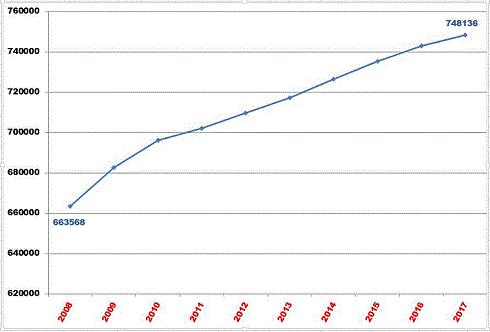
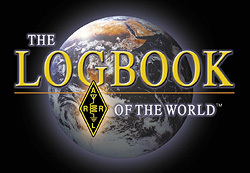 "We are very pleased that participants in CQ's WAZ award program will now be able to use their LoTW confirmations for award credit," CQ Editor Rich Moseson, W2VU, said. "CQ WPX Award participants have found it very helpful, and we are sure it will be equally helpful for those pursuing WAZ and its many variations."
"We are very pleased that participants in CQ's WAZ award program will now be able to use their LoTW confirmations for award credit," CQ Editor Rich Moseson, W2VU, said. "CQ WPX Award participants have found it very helpful, and we are sure it will be equally helpful for those pursuing WAZ and its many variations." Sponsored by
Sponsored by 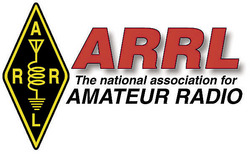 employees, a nationwide network of volunteers, and an elected board of 15 directors. ARRL publishes a monthly membership journal, QST, as well as many publications on radio-related topics; sponsors educational and membership programs across a wide array of Amateur Radio activity, and represents Amateur Radio to the general public as well as with the US Government and internationally.
employees, a nationwide network of volunteers, and an elected board of 15 directors. ARRL publishes a monthly membership journal, QST, as well as many publications on radio-related topics; sponsors educational and membership programs across a wide array of Amateur Radio activity, and represents Amateur Radio to the general public as well as with the US Government and internationally.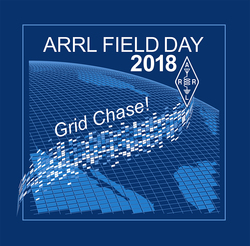 Encourage club members, family, friends, and prospective hams to take part in ARRL Field Day with recruitment
Encourage club members, family, friends, and prospective hams to take part in ARRL Field Day with recruitment  The April Frequency Measuring Test (
The April Frequency Measuring Test (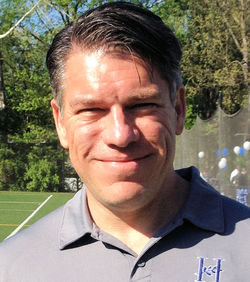
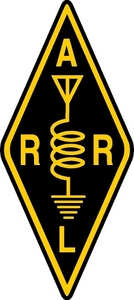 Department of the Interior's Office of Emergency Management (DOI OEM) in Washington, DC.
Department of the Interior's Office of Emergency Management (DOI OEM) in Washington, DC..JPG) Taylor specifically would like users to pay attention to the section on page 1 which reads, "Please note: DXpedition Mode is not yet ready for 'production' use. Until WSJT-X version 1.9.0 is fully released, [FT8 DXpedition Mode] should be used only in controlled test situations. Please remember to send us your test results."
Taylor specifically would like users to pay attention to the section on page 1 which reads, "Please note: DXpedition Mode is not yet ready for 'production' use. Until WSJT-X version 1.9.0 is fully released, [FT8 DXpedition Mode] should be used only in controlled test situations. Please remember to send us your test results.".JPG) Taylor said that posting FT8 DXpedition Mode operating frequencies for each HF band was done in the hope that it might minimize interference with other digital modes. "We will welcome thoughtful suggestions that might improve this list of suggested frequencies," Taylor added. "We hope to see you in the pileups calling W1/KH7Z and W7/KH7Z on 14.105 MHz, 1400 - 1600 UTC on April 7!"
Taylor said that posting FT8 DXpedition Mode operating frequencies for each HF band was done in the hope that it might minimize interference with other digital modes. "We will welcome thoughtful suggestions that might improve this list of suggested frequencies," Taylor added. "We hope to see you in the pileups calling W1/KH7Z and W7/KH7Z on 14.105 MHz, 1400 - 1600 UTC on April 7!"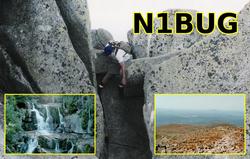
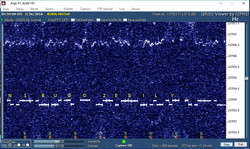
-with-Mtns.JPG) "Scientists from US universities and government labs will explore the physics of scintillations, magnetic field-aligned plasma irregularities, artificial and natural atmospheric airglow, stimulated electromagnetic emissions, plasma waves, and radio-enhanced ionization," Fallen said. "The HAARP transmitter is still at 80% net power, but by summer we expect to have the final 'column' of transmitters restored, bringing the array back to 100%."
"Scientists from US universities and government labs will explore the physics of scintillations, magnetic field-aligned plasma irregularities, artificial and natural atmospheric airglow, stimulated electromagnetic emissions, plasma waves, and radio-enhanced ionization," Fallen said. "The HAARP transmitter is still at 80% net power, but by summer we expect to have the final 'column' of transmitters restored, bringing the array back to 100%.".JPG)
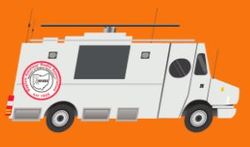 "The displays will allow groups planning to develop their own units to get suggestions and ideas and ask questions of those supporting the vehicles," Hamvention said in announcing the special display area. Groups planning to display vehicles are encouraged to have them staffed, functional, and able to demonstrate their capabilities during Hamvention.
"The displays will allow groups planning to develop their own units to get suggestions and ideas and ask questions of those supporting the vehicles," Hamvention said in announcing the special display area. Groups planning to display vehicles are encouraged to have them staffed, functional, and able to demonstrate their capabilities during Hamvention. During Hamvention, emergency communicators also will have an opportunity to attend more than 10 forums dealing with public service. Those attending at least three ARRL-sponsored public service forums will receive a certificate. One session will offer attendees a chance to hear firsthand reports from radio amateurs who served in Puerto Rico after the hurricanes this past year.
During Hamvention, emergency communicators also will have an opportunity to attend more than 10 forums dealing with public service. Those attending at least three ARRL-sponsored public service forums will receive a certificate. One session will offer attendees a chance to hear firsthand reports from radio amateurs who served in Puerto Rico after the hurricanes this past year.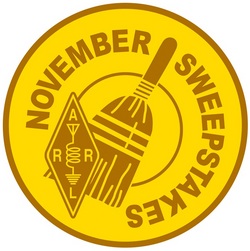 2017 ARRL November Sweepstakes CW results are available. The results of the 2017 ARRL November Sweepstakes CW have been posted on the ARRL website. Go to the
2017 ARRL November Sweepstakes CW results are available. The results of the 2017 ARRL November Sweepstakes CW have been posted on the ARRL website. Go to the 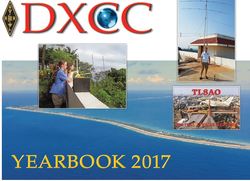 The 2017 DXCC Yearbook is now available. The 2017
The 2017 DXCC Yearbook is now available. The 2017 .jpg) The Amateur Radio Slow-Scan Television (SSTV) system on the International Space Station (ISS) will be back worldwide April 11 - 14. The transmissions, using the call sign RS0ISS, will mark Cosmonautics Day in Russia on April 12. Images will be related to the Soviet Union's Interkosmos cooperative space ventures project. SSTV images will be transmitted in PD-120 format on 145.800 MHz (FM) using the Kenwood TM-D710 transceiver in the ISS Russian Service Module. The free Windows application
The Amateur Radio Slow-Scan Television (SSTV) system on the International Space Station (ISS) will be back worldwide April 11 - 14. The transmissions, using the call sign RS0ISS, will mark Cosmonautics Day in Russia on April 12. Images will be related to the Soviet Union's Interkosmos cooperative space ventures project. SSTV images will be transmitted in PD-120 format on 145.800 MHz (FM) using the Kenwood TM-D710 transceiver in the ISS Russian Service Module. The free Windows application 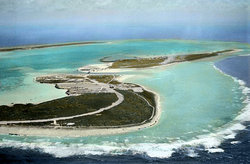 An upcoming Wake Island operation will make a rare grid available. Starting this month, Philip Gairson, N7NVK, will begin working on Wake Island, which is in grid RK39 for those participating in the 2018 ARRL International Grid Chase (
An upcoming Wake Island operation will make a rare grid available. Starting this month, Philip Gairson, N7NVK, will begin working on Wake Island, which is in grid RK39 for those participating in the 2018 ARRL International Grid Chase ( Two radio amateurs are now on the International Space Station. With the addition of three new crew members, the International Space Station now has a full complement of six. Astronauts Ricky Arnold, KE5DAU, and Drew Feustel, and cosmonaut Oleg Artemyev headed into space on March 21 aboard a Soyuz MS-08 vehicle, launched from Kazakhstan. The new ISS residents were welcomed as part of the Expedition 55 crew by station commander Anton Shkaplerov and crew -- Scott Tingle, KG5NZA, and Norishige Kanai. During his time in space, Arnold, a former educator, will wrap up NASA's Year of Education on Station, an initiative to engage students and educators in human spaceflight and science, technology, engineering, and math (STEM) careers. Arnold and Tingle will share Amateur Radio on the International Space Station (
Two radio amateurs are now on the International Space Station. With the addition of three new crew members, the International Space Station now has a full complement of six. Astronauts Ricky Arnold, KE5DAU, and Drew Feustel, and cosmonaut Oleg Artemyev headed into space on March 21 aboard a Soyuz MS-08 vehicle, launched from Kazakhstan. The new ISS residents were welcomed as part of the Expedition 55 crew by station commander Anton Shkaplerov and crew -- Scott Tingle, KG5NZA, and Norishige Kanai. During his time in space, Arnold, a former educator, will wrap up NASA's Year of Education on Station, an initiative to engage students and educators in human spaceflight and science, technology, engineering, and math (STEM) careers. Arnold and Tingle will share Amateur Radio on the International Space Station (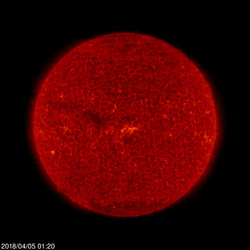 Geomagnetic indicators were quiet, with average daily planetary A index declining from 10.6 to 5, and average mid-latitude A index dipping from 8.9 to 4.
Geomagnetic indicators were quiet, with average daily planetary A index declining from 10.6 to 5, and average mid-latitude A index dipping from 8.9 to 4.







